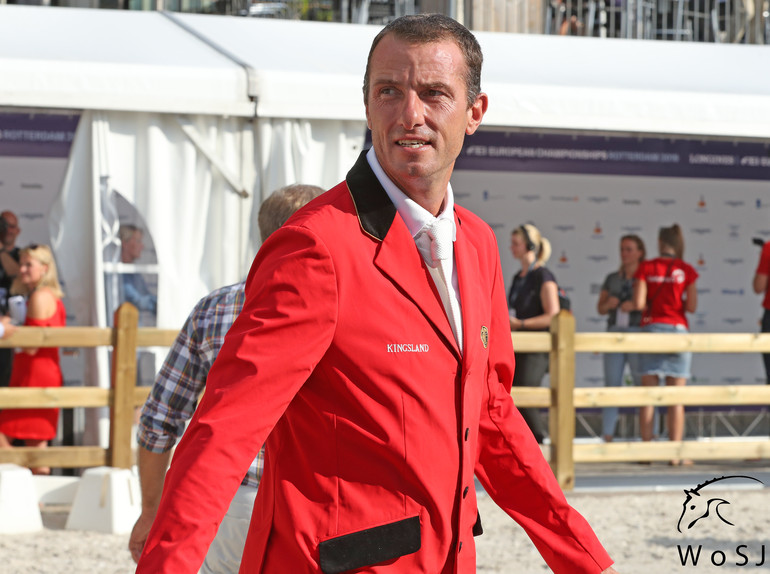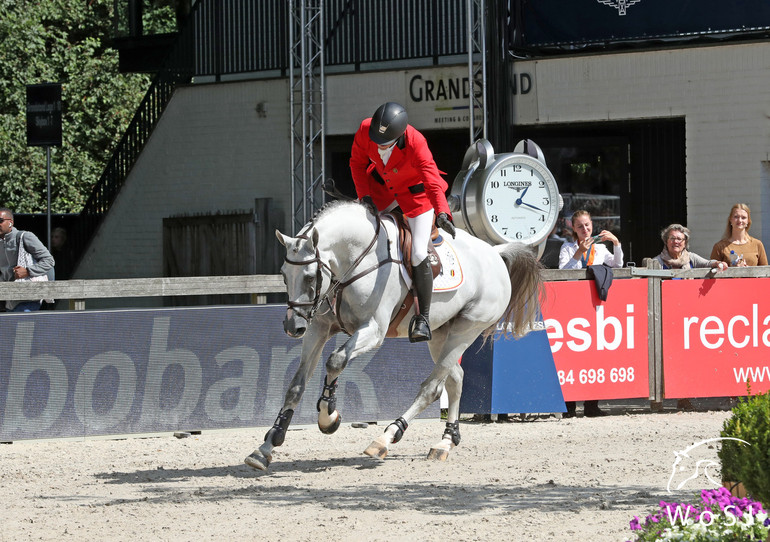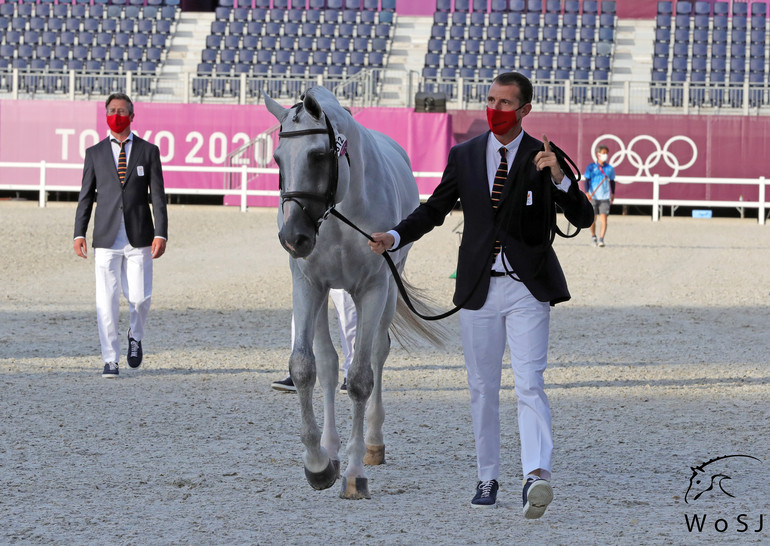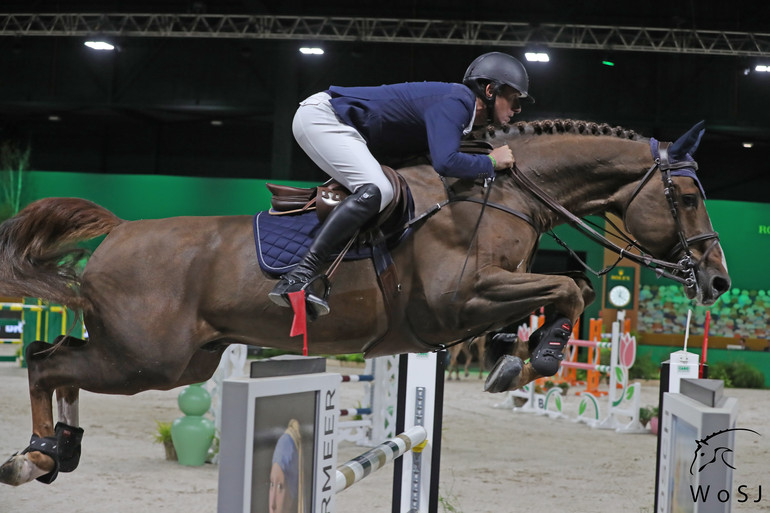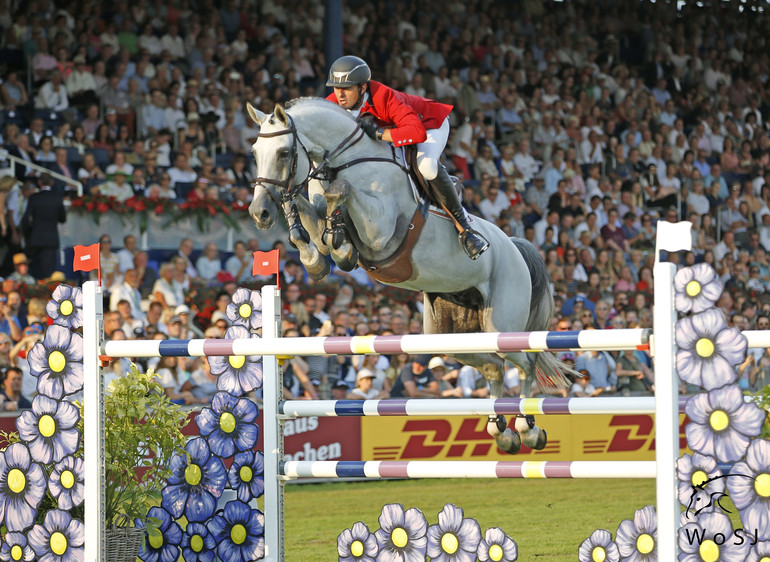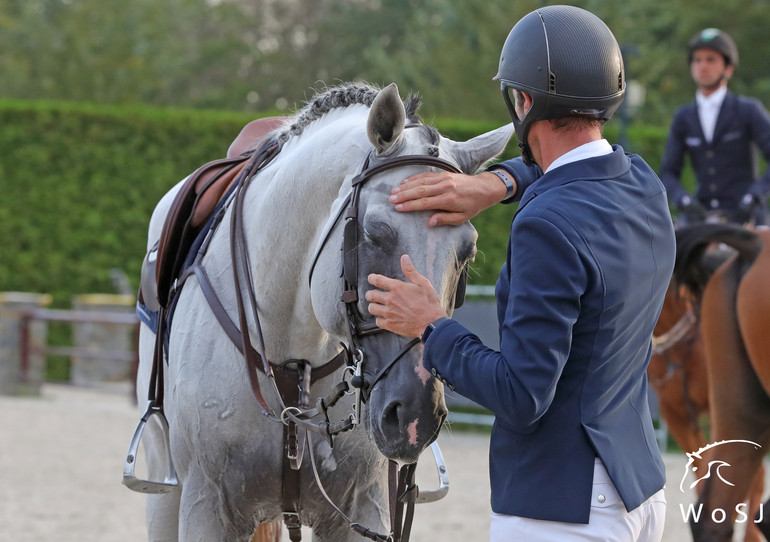Text © World of Showjumping
Gregory Wathelet has produced countless of horses for the top sport: Cortes ‘C’, Coree, Conrad de Hus, Copin van de Broy, Forlap and Nevados S are just some of them. The now 41-year-old became European Vice Champion in 2015, won the Rolex Grand Prix of Aachen in 2017, was crowned European Champion with the Belgian team in 2019 and took home the team bronze medal for Belgium at this summer’s Olympic Games.
WoSJ met up with Wathelet – one of the most respected horsemen in the sport – and asked him what good horsemanship means to him, and how he puts it to practice in his own work.
A good horseman knows exactly what to do, and why
“To me, good horsemanship is having real knowledge about horses. It’s about everything from how to build the horses up, ride them, train them, to how to take care of them, shoe them and feed them. Basically, the whole process of caring for the horses has to do with good horsemanship. In my opinion, a rider who knows what good horsemanship is, is a rider who takes really good care of the horses and knows exactly what the horses need. Being a good horseman or horsewoman means you need to know exactly what you do, and why you do it,” Wathelet says.
“To take the best possible care of my horses, it is very important to me that I am able to trust the people I work with. This is why I prefer to work on a long-term basis with my grooms, my vet and my blacksmith – they have all been with me for many, many years,” Wathelet continues.
To me, good horsemanship is having real knowledge about horses
“Personally, in my day-to-day management, I like to have the horses outside as much as possible,” Wathelet says about how he practices horsemanship. “As long as the weather allows it, my horses go in the field every day, and we try to exercise them as much as possible outside – we have a big racetrack, a sand arena and a grass ring where we can train, which give the horses variation. I think that makes a difference to the horses. You feel it during the winter months, when you are more stuck inside than usual: The horses get a bit unmotivated but the moment you go out they are fresh and full of energy. That’s why you see many riders play around and work the horses as varied as possible – it keeps the horses interested and motivated.”
To learn you have to do
"Good horsemanship is much more than just good riding,” Wathelet continues. “You can be a good rider, but still know nothing about your horse and how to manage it. The extreme examples are of course those who can jump a nice round, but don’t know how to put a bridle on.”
“I am self-made, which means I had to learn – and to learn you have to do,” Wathelet says with a smile. “At the beginning of my career, I did everything myself. I cleaned the boxes, I groomed my horses, I clipped, I drove the truck. Today, my grooms do much of this work – but when they for example drive my horses to a show, I have an understanding of their job. I know when and where to make a stop, and I know what the horses need for a long travel. If my groom has a question, I can answer.”
I am self-made, which means I had to learn – and to learn you have to do
“Personally, I learned a lot by trying and failing on my own, looking to what others were doing, and testing it myself. So, the whole learning process took me longer, because I was not told by a trainer what to do, but in the end, I got a real feeling for what works and what does not work with different horses,” Wathelet tells.
“In the early days of my career, I had very little dressage skills – simply because I did not really have the opportunities to go and train with someone. I think I was 20 when I got my first dressage lesson. Although I could execute the different exercises, I did not really know them by their names or terms,” Wathelet smiles.
“That you can learn something new every day is one of the greatest aspects of working with horses,” Wathelet says. “Today, I have my breeding project – which is still relatively new to me – and I do exactly the same as I did 25 years ago: I learn by doing, each day. And if I wouldn’t still be learning, I would be going backwards”
Adapting to each horse
“Throughout the years, I have learned that while you need a system, you also need to adapt everything you do to each horse. All horses are different,” Wathelet points out. “With some horses, the process might go quicker and with others slower – and sometimes, circumstances play a part: A horse simply needs to step up a bit earlier than you had planned. Many times, I have seen how the misfortune of one horse is the luck of another. For example, if it was not for the fact that Forlap had his accident and Coree got injured, Nevados would probably still be a 1.50m speed horse. But, because I needed him, he got the chance and he ended up as my championship horse.”
I have learned that while you need a system, you also need to adapt everything you do to each horse
“When making a good program for your horses, whether that’s for a young horse or a championship horse – you need to know what you do and why you do it,” Wathelet says. “And because I have gone through all these different stages in my career, I know how to flat a four-year-old, and I know how to flat Nevados – those are two different things,” Wathelet points out. “What you ask in the daily work obviously depends on the age and experience of the horses. When they are younger you educate them, as they get older the dressage work comes into the picture and you ask more. It’s the same with kids when they start playing football: In the beginning, they just need to have fun and know where to send the ball too, then when they get older you start training on the technique and fine-tune details.”
“In order to produce a horse for the top sport, you need to understand what is required. To succeed, you need horses that react fast – they need to be responsive in terms of forwardness and collecting and they need to be able to turn very quick. Our sport became so technical, so delicate, so fast, so this is very important. 90% of the work I do with the horses to get them to where I want to, happens without jumping. Then I finish off the job on the fence,” Wathelet explains.
Losing sight of the process
“Sometimes, it feels like the next generation of riders lose a bit sight of the process,” Wathelet says. “To become a good horseman or horsewoman, you need to build stone on stone. In the past, you would often work your way up and make your mark when you reached your mid-twenties or even mid-thirties. Now, the junior and young riders have horses that any top-level rider would wish for, they have grooms, all the equipment, and big trucks. I could not even afford a groom at that age, I had to do it all myself. This is where I think many younger riders lose out: They don’t have to do it step by step anymore. They learn to ride, and they learn to be a pilot – but many of them don’t learn about the horses.”
“Because there is more and more money in our sport, people can take short-cuts and afford to have lots of staff around them from the very beginning,” Wathelet continues. “This does not mean their horses are not well taken care of, rather on the contrary because they have excellent staff. However, these riders often miss out on gaining the know-how that is necessary in order to become a good horseman or horsewoman.”
To become a good horseman or horsewoman, you need to build stone on stone
“Many think that equestrian sports are just for the rich, and that it is impossible to succeed without having the financial resources,” Wathelet continues. “But anything is possible – also when you start on zero. It’s difficult, for sure, but possible. In Belgium, both Jerome Guery and I are examples of this – we both started with absolutely nothing and made our way up with hard work. It might take more time to do it the way we have done it, but I prefer to have gone through that whole process. I think it made me a better horseman and a better rider.”
“The ultimate horseman for me, is John Whitaker,” Wathelet says. “He keeps everything so simple with his horses. There is no fuss. John has so much feeling and can ride any horse in the world. To still be able to produce top results at the highest level of the sport at his age is incredible. If he has a good enough horse, he is still right up there. Who else can compare? I don’t know! Now that I know John, I think he is even more extraordinary; he is just such an easy-going guy that comes from a modest background, who enjoys life at his farm with his animals, and is always friendly to everyone.”
Paying attention to the image of the sport
“I think the majority of the top-level riders are good horsemen, but we for sure have to work on the awareness around the importance of good horsemanship. All the riders need to think about this in the same way, because it matters for all the professionals in the equestrian community who make a living from working with horses,” Wathelet says. “Two years ago, we had a big discussion about the use of hind-boots and ended up with regulations. Why did we end up in this situation? Because some riders exaggerated how they used the boots. The behaviour of a few had a big impact on the majority. We all have to pay attention to how we contribute to the image of the sport.”
“It’s important that we make non-equestrians understand that the majority of sport horses are treated better than humans. They are loved and cared for in the best possible way – and they enjoy what they are doing. A proof of this is when top level horses are retired. Many of them have a hard time adjusting to be at home – they enjoy show life and the human contact,” Wathelet says.
We all have to pay attention to how we contribute to the image of the sport
“The FEI talks a lot about horse welfare, but in my opinion, they – and their officials – need to understand what the welfare of the horse really is,” Wathelet says. “I think many officials should be able to judge situations better, which of course is very complicated – but this needs improvement. Many officials seem to follow up on whatever is in the rulebook, be it a minor or major offence. On the other hand, there are certain situations that probably comprise the welfare of the horse more than for example a tiny spur rub, but these get no reaction – just because it's not written black on white in the rules.”
“I am not always sure that the officials are qualified to take the big decisions they have been asked to take,” Wathelet says. “We also have to remember that it can be difficult to take unpopular decisions that go against people who have a lot of influence in the sport. While I don’t have the answers on how to solve these problems, I think we need to look at how to make this better.”
Listen to the riders
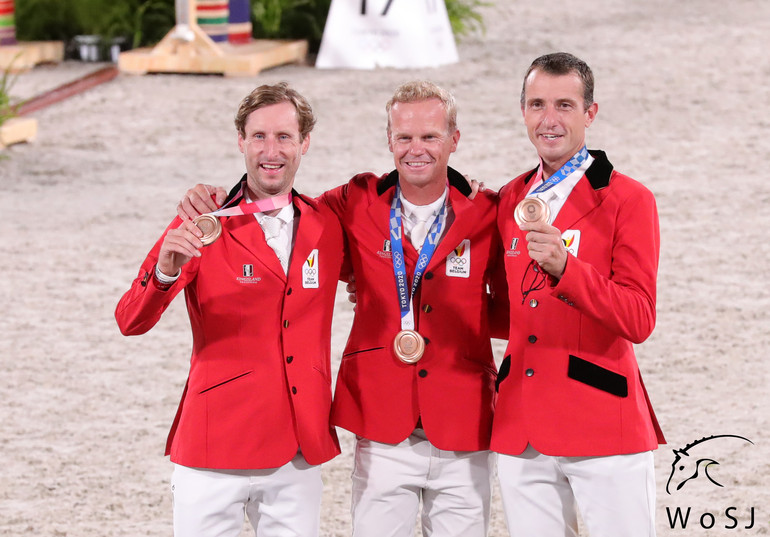 "When I came home from Tokyo with team bronze, the whole village had lined up because they were so proud of what we had done. It just shows the difference that the Olympic Games makes in terms of visibility for the sport, so it is very important that we show it in the very best way we can," Wathelet says. Photo © Jenny Abrahamsson for World of Showjumping.
"When I came home from Tokyo with team bronze, the whole village had lined up because they were so proud of what we had done. It just shows the difference that the Olympic Games makes in terms of visibility for the sport, so it is very important that we show it in the very best way we can," Wathelet says. Photo © Jenny Abrahamsson for World of Showjumping.
“To start with, I think that when the FEI makes their decisions – they need not only to consult, but also to listen, really listen to the riders, because we have real knowledge about the horses and the sport. There have been too many rule changes that have been made against the advice of the riders. It makes it difficult to improve the sport when there is such a distance between the FEI and the riders in their opinions,” Wathelet points out.
“As an example, nearly every single rider was against changing the format for the Olympics, and to cut the numbers of riders from four to three as well as the drop-score. We were all saying it would go against the welfare of the horses. Still, the FEI went ahead and had it voted through. It’s a shame we had to try that format out live on TV, broadcasted all over the world, because unfortunately there were some bad images that were not good for the sport,” Wathelet says.
I think that when the FEI makes their decisions – they need not only to consult, but also to listen, really listen to the riders, because we have real knowledge about the horses and the sport
“To me, the competition format was a little bit too short,” Wathelet details. “The question is if we should not have one more individual qualifying round. In Tokyo, some of the riders simply had a good day in the first round, while others were a little bit unlucky – and that determined whether they could jump the second round or not. In the second round, you could really see that some were not up to the level – it was dangerous. It was not good for them, but also not for the sport – it creates bad images. Furthermore, it’s the Olympic Games, which you work towards for years: Then I don’t think it’s right that only one round should determine whether you move forward or not. For sure this kind of qualifying system works when you run the 100 meters, but we compete with an animal – it’s not comparable.”
“From the new format, there are things to keep, but there are also things we need to change. When people are struggling with the level they are competing at, it’s not good for the sport – even more so at the Olympics which are broadcasted to such a wide, global audience,” Wathelet says. “When Belgium won the team gold at the Europeans, it was news that mostly stayed within the equestrian community and perhaps two of my neighbours knew about it – but when I came home from Tokyo with team bronze, the whole village had lined up because they were so proud of what we had done. It just shows the difference that the Olympic Games makes in terms of visibility for the sport, so it is very important that we show it in the very best way we can – and for this we all need to take responsibility.”
No reproduction without written permission, copyright © World of Showjumping



